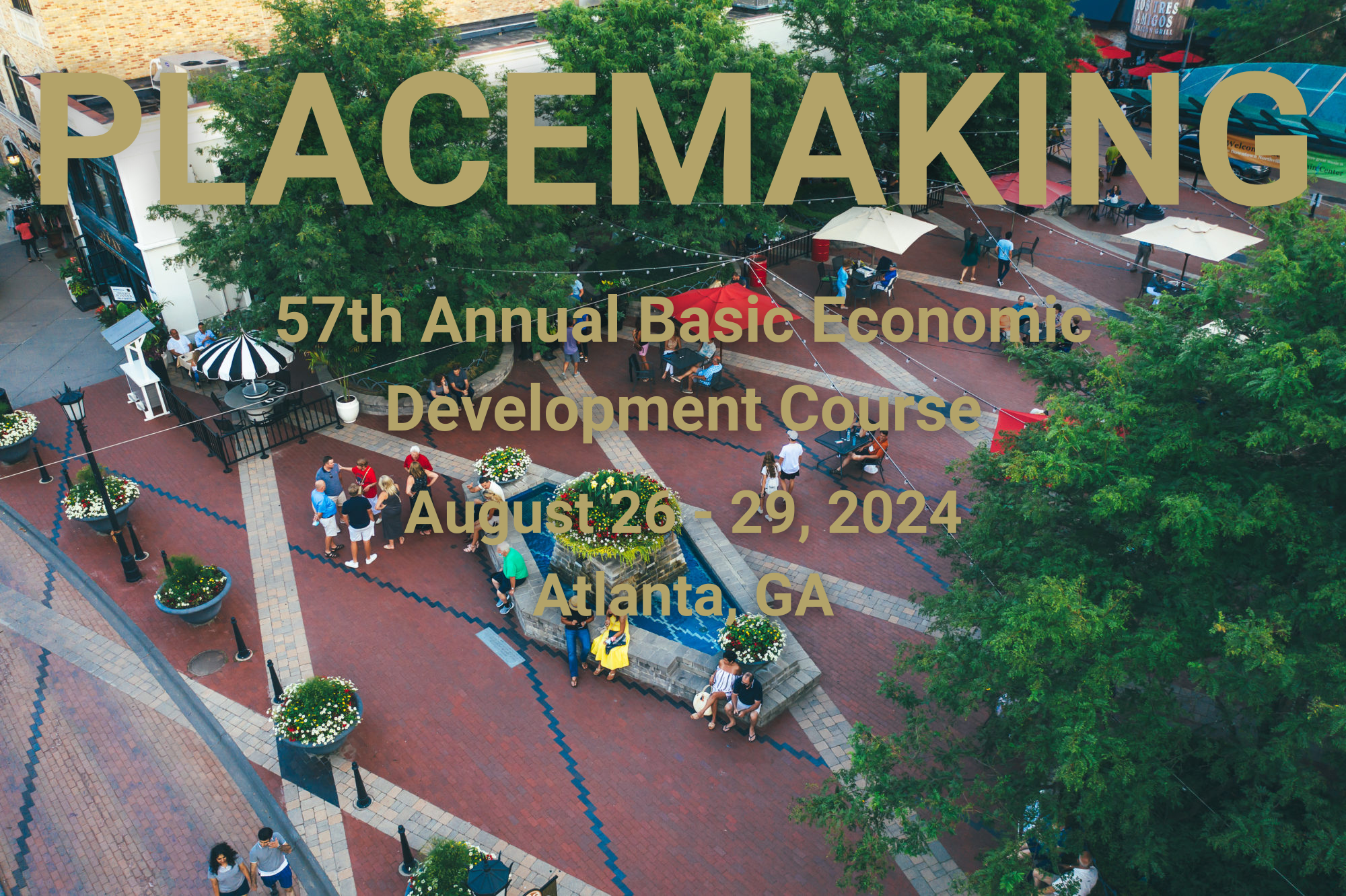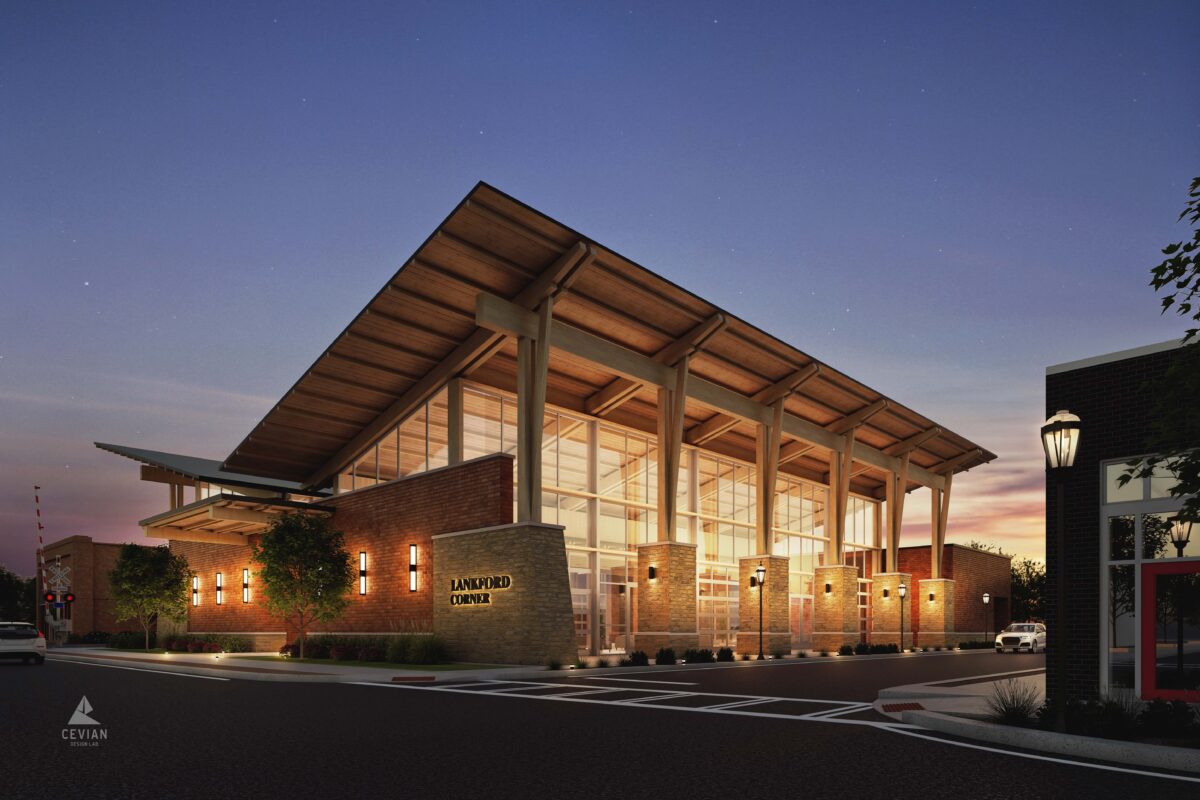The Center for Economic Development Research (CEDR), a program of Georgia Tech’s Enterprise Innovation Institute, provides communities with the data and guidance they need to make smart economic development decisions. Alan Durham is a senior research faculty manager and the International Economic Development Council’s (IEDC) economic development course director at CEDR, and below he outlines some basics of a crucial – and often overlooked – element of economic development: placemaking.

What is placemaking?
I’m going to start by giving an example of what placemaking isn’t. So, after World War II and the birth of suburbia, development in the United States became very generic, very homogenized, very cookie-cutter, and that has continued through today. If you drive I-75 to Florida, every exit ramp looks exactly the same, with the same fast-food chains, drug stores, grocery stores, and it’s the same in Georgia or Florida, Mississippi or Colorado.
Think about the old Dixie Highway before the Interstate system was built. That was a four-lane divided highway that everyone took to get to Florida, and there was a lot of character – you’d see, for example, local restaurants shaped like coffee pots. We call that roadside architecture. Think about Route 66 and all the crazy motels that looked like teepees. Some of the old Arby’s chain restaurants used to be shaped like cowboy hats. These things were interesting. They were unlike anywhere else. Our Interstate exits could be anywhere, and placemaking is about creating someplace unique.
What characteristics make a particular place appealing?
The heart of their history, and the heart of their character, is usually their historic downtown area, most of which were built in the 1890s through about 1920. That’s where you can find your local mom-and-pop restaurants, your local coffee shop, your pizza parlor that is not a chain. These places are unique, the architecture’s regionally unique – often tied to locally available materials – and your communities differ depending on who the local rich person was and what kind of buildings they wanted to build. You can look at different downtowns and feel like you’re actually somewhere, not just anywhere.
How is placemaking different from the common conception of economic development?
The traditional idea of economic development is business recruitment, retention, and expansion, and communities have been doing economic development through that lens for decades. But we have found that younger generations, especially millennials and Generation Z, don’t move to an area for a job. They move to an area because it’s where they want to live, and once they’re there, they look for a job.
We still do business recruitment, retention, and expansion, but we’re also starting to pay a lot more attention to placemaking to try to attract the younger generation of workers, and the key to attracting them is building a place where people want to live and businesses want to be. That’s my economic development focus: How can I help communities become extraordinary places that stand out from every other place in America? What unique assets make your community a special place that people want to live in?
What are some of the elements that younger generations prioritize?Number one is the built environment. Historic buildings have a lot more character than a strip mall, so I help communities redevelop their historic downtowns. A lot of those areas are sitting there vacant and boarded up, and people really want that unique coffee shop with wood floors and huge windows. It’s not the same as a Starbucks drive-through.
Number two, it has to be walkable. People are tired of sitting in traffic and filling up their tank with expensive gas. They want to be able to walk somewhere, to bike somewhere – to walk downtown and have dinner at a pizza parlor, walk next door to an ice cream shop, and then afterward have a beer and see a live band.
To facilitate this, town centers need to introduce more residential buildings in walking distance to commercial offerings. The idea of keeping restaurants and retail on the ground floor but converting some of the vacant upper space to residential lofts is coming back in favor, because if you live in downtown, you’re likely to patronize those businesses. Retail follows rooftops.
Do you ever encounter pushback to the principles of placemaking?
You sometimes run into opposition against apartments and rental units. In all fairness, a lot of communities already have too much rental and they need to explore ways to encourage home ownership, and that could be addressed with new development, but rental is always going to be a part of a community. You want to make sure it’s kept in balance.
The second concern tends to be traffic. The worry is, “You can’t put all these residents in your downtown because you’re going to clog up the street with traffic.” But that’s not the case, because if you live downtown, you’re going to walk a block away to get your lunch. So you’re actually reducing traffic by increasing density in and around your historic downtown and central business district.
The best way that I have found to counter some of these false narratives is to show people what other communities have done. “Look – this community is successful and thriving and exciting. They’re attracting young people. This is the workforce of tomorrow. They want to live in this location – and, look, traffic isn’t a problem here.” If you build a place for cars, you’re going to get cars. If you build a place for pedestrians, you’re going to get people on foot.
What types of questions should communities who want to increase their desirability be asking themselves?
Whenever you do new construction in a historic neighborhood, you have to have design guidelines in place to make sure that the new construction is compatible with and complements the existing historic buildings. I’ve seen communities build an apartment complex that looks nothing like any of their historic brick buildings. Instead of becoming a part of their downtown, it’s now an eyesore. They might have gotten the location correct, but instead of creating a place by picking up some of the elements of the historic buildings, they end up missing the mark and destroying the character of their downtown.
So design guidelines are extremely important, and communities need to ensure that developers are building an asset to their community that will continue to contribute to its character for the next 50 years.
What kind of guidance can CEDR offer those communities?
If half your downtown is vacant and boarded up, it’s hard to know where to start. CEDR can go into these historic central business districts and give a community a road map. We show them what they could be versus what they are today, and we can give them step-by-step instructions to help them get from point A to point B.
That involves everything from architectural design to financing building restoration, identifying parking needs, helping them activate festivals, and creating downtown park space to hold small concerts. Every historic downtown is unique, so we go in and work with the community to help them make sure their historic downtown is an asset that attracts people and businesses.
What trends is CEDR noticing in Georgia?
One of the things that we have seen post COVID-19 is people who can work remotely are moving out of inner cities, and they’re not stopping at the suburbs. They’re going to exurbs and small towns, where property is cheaper and crime is less – and the communities that have already done an excellent job bringing back life into their historic downtowns are going to be the winners here. Placemaking helps set these communities aside as somewhere special with unique characteristics that are going to draw residents.
CEDR is hosting its annual Basic Economic Development Course (BEDC) August 26-29 in Atlanta. Can you give us a brief overview of that program?The BEDC is the longest running basic economic development course in the nation; this is the 57th year that it’s been offered by Georgia Tech. They partner with IEDC, the International Economic Development Council, to put on this four-day course, which covers a wide variety of economic development subjects, from real estate redevelopment to business recruitment. We do marketing and promotion. We do ethics in finance. The people who take the course are usually new to the economic development industry, and the BEDC gives them a very deep and thorough overview of what to expect in their economic development careers.
Every year I’ve taught it, the BEDC has been about placemaking, creating a place where people want to live and businesses want to be. Right now, too many people live where they do because they have to, not because they want to. Smaller communities should look around and figure out what makes them special, because they need to capitalize on their unique assets if they’re going to be a population winner in the future.
Register for the 57th annual BEDC here.


